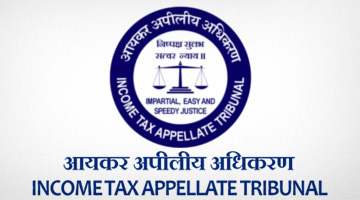I-T - Only ascertained liability and not mere provision, is eligible for adjustment against book profit: ITAT Third Member
By TIOL News Service
HYDERABAD, MAY 07, 2018: THE MATTER REFERRED BEFORE THE THIRD MEMBER IS - Whether provision made by the assessee for bad debts is to be added to the book profit to the extent it contains unascertained liability. YES IS THE ANSWER of the ITAT Third Member.
Facts of the case:
The assessee-company is engaged in the business of purchase and distribution of electric power. While working out its taxable income u/s 115JB, the AO had taken into consideration the book profit as declared under the Companies Act and thereafter made certain disallowances of the provision of bad & doubtful debts to the tune of Rs. 22,89,02,937/-, on the ground that it was not an ascertained liability. The case of the assessee was that in the computation of P&L A/c under the normal provisions, the assessee had not claimed deduction of provision for bad debts but there was a claim of deduction of bad debts actually written off, to the tune of Rs. 25.43 Crs. Thus, as per the assessee, the actual bad debts written off was more than what was reflected as provision in the books of account. It was submitted that the assessee had been making a provision for bad and doubtful debts from year-to-year and carried it to a separate account and in the event of ascertained liability, the provision was reduced accordingly. The actual loss suffered on account of bad debts being 25.43 Crs, the net amount debited to the Profit & Loss Account during the year was Rs. 2,54,00,000/-. Thus, the assessee claimed that nothing should be added back to the book profit while computing the income u/s 115JB of the Act. The AO as well as the FAA however, rejected this contention of assessee.
On appeal before the ITAT, the Judicial Member was of the opinion that the view taken by the Tax Authorities was proper inasmuch as the Tax Authorities were not entitled to question book profit as reflected in the P&L A/c maintained under Companies Act. The provision refers to the book profit as arrived at in the books maintained for Company Law purpose and it only speaks of addition to the said book profit referable to provision for bad debts, which was unascertained liability. The Judicial Member further observed that the assessee was seeking reduction from the book profit by actual bad debts written off but, such adjustment was not permissible since the Legislature had earmarked the 'book profit’ and the amounts which were to be added back or reduced from such 'book profit’. The bad debts written of was not an item falling under Explanation-1 to section 115JB and hence the question of reducing the same did not arise merely on the ground that the bad debts written off was more than the provision made during the relevant year. It was also noticed that the assessee had prepared its P&L A/c in accordance with the provisions of Companies Act and hence there was no jurisdiction to tinker with the net percentage so arrived at.
On the other hand, the Accountant Member proposed a separate order, since he was of the view that the addition made by AO was not in accordance with law. In this regard, he observed that as per clause 'c' of Expalanation-1 to section 115JB, the provision made for doubtful debts, being unascertained liability, deserves to be added to the book profit but in the peculiar matrix of the case, the overall picture ought to have been taken into consideration. The Accountant Member tabulated the figures pertaining to the provision account from A.Ys 2006-07 to 2011-12 to emphasise that in the year under consideration, there was ascertained liability to the extent of Rs. 25.43 Crs and the same ought to have been taken into consideration to arrive at book profit. No doubt, the unascertained liabilities have to be added back to the book profit but it makes an exception to the ascertained loss, even though it was not charged to the P&L A/c; so long as it had impact on the profits / liability of the company, then it had to be adjusted against the book profit.
Therefore, on account of conflict of opinion expressed by the Judicial Member and the Accountant Member, the question was referred to the President to resolve the issue by referring the matter to a Third Member, who was to decide as to whether the AO was justified in adding back the provision for bad and doubtful debts to the book profit u/s 115JB and not reducing the actual bad debts written off from the book profit to arrive at the actual book profit.
ITAT Third Member held that,
++ a careful analysis of Section 115JB shows that the "book profit" means the profit as shown in the Profit & Loss Account in the relevant assessment year, prepared under the Companies Act, and the same has to be reduced by the amount set aside to provisions made for meeting liabilities, other than ascertained liabilities. No doubt, the AO has no power to go behind the profit / loss declared for Company Law purposes, and the 'book profit’ shown therein has to be taken as the base for making adjustments u/s 115JB. Both the Members of ITAT have expressed their views mainly based on the interpretation of sub-clause 'c' to Explanation-1 of section 115JB which merely speaks of making additions to the book profit, only in the event where the provision made for meeting liabilities is not an ascertained liability. In the instant case, the assessee has debited the expenditure to the tune of Rs. 131.93 Crs to arrive at the book profit and Schedule-14 shows that a sum of Rs. 22,89,02,937/- was provided for with the narration "Bad & Doubtful debts Written off". Thus, it is not specified as to whether it was only a provision or a write off. However, going by the facts, it is clear that the assessee was maintaining separate provision account wherein it was shown that the bad debts written off is to the tune of Rs. 25.43 Crs which is an ascertained liability. In fact the assessee ought to have claimed deduction of the entire ascertained liability but chose to write off only to the tune of Rs. 22.89 Crs;
++ the provision of Sub-clause 'c' to Explanation-1 empowers the AO to increase the book profit to the extent of amount set aside for meeting unascertained liabilities whereas in the instant case, as against the correct figure of Rs. 25,43,02,937/- the assessee has written off only to the tune of Rs.22,89,02,937/- which is an ascertained liability and thus the same cannot be taken into consideration. In fact the Schedule annexed to the P&L A/c, prepared for Company Law purposes, indicate that the assessee clearly mentioned it as bad and doubtful debts written off. There is no dispute with regard to the fact that the Tax Authorities have not stated anywhere that the liability to the tune of Rs. 25,43,02,937/- is not an ascertained liability. If the assessee has claimed lesser than the ascertained liability, it cannot be assumed that it is a provision merely because of a different accounting method followed by the assessee. Therefore, the view taken by the Judicial Member is not in accordance with law. At the same time, the view taken by the Accountant Member also deserves to be modified in view of the fact that the grounds of appeal is restricted to disallowance of Rs. 22.89 Crs only. As rightly pointed out by the DR, the actual claim made by assessee in the P&L A/c maintained for Company Law purposes cannot be tinkered with by the AO, but at the same time further benefit cannot be given. The Accountant Member was of the of the view that the entire amount of Rs. 25,43,02,937/- should be taken into consideration for recomputation. The issue which arises out of the order of FAA is confined to Rs. 22.89 Crs and the ground being limited to the said addition, the Tribunal cannot go beyond the issue as raised by the assessee and therefore the Accountant Member ought to have confined the issue to the correctness of the addition made therein;
++ in the peculiar facts of this case, the addition made by the AO to the tune of Rs. 22.19 Crs is not in accordance with law since this is a part of the ascertained liability which was otherwise adjusted in the provision account separately maintained by the assessee, though while claiming write off, it was restricted to Rs.22.89 Crs. Therefore, the assessee was not entitled to further reduction to the book profit but the disallowance of Rs. 22,89,02,937/- deserves to be set aside. Finally, in accordance with the view expressed by the Third member, the AO is directed to allow the deduction from the book profit of sum of Rs.22.89 crores while computing the taxable income u/s 115GB of the I.T. Act.
(See 2018-TIOL-665-ITAT-HYD-TM)














